Community sentences and orders statistics - December 2010
This page shows statistical information on the:
- Number of offenders serving community sentences and orders around the country
- Total number of sentences and orders being served
- The percentage of different types of sentences and orders
- Breakdown of the offender population by
- Other facts and figures
* Refers to the total number of sentences and orders being served. An individual offender can be serving more than one sentence and/or order at any time.
Total number of sentences and orders* (weekly snapshot)
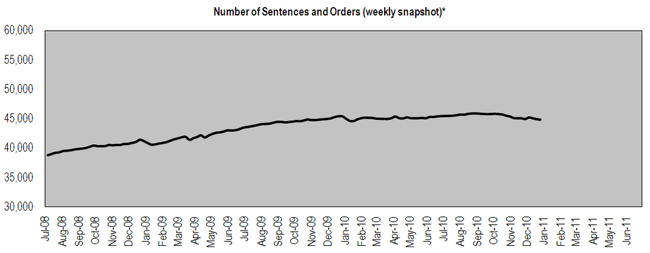 View a larger version of the total community sentences and orders graph
View a larger version of the total community sentences and orders graph
* Refers to the total number of sentences and orders being served. An individual offender can be serving more than one sentence and/or order at any time.
Proportion of different sentences and orders*
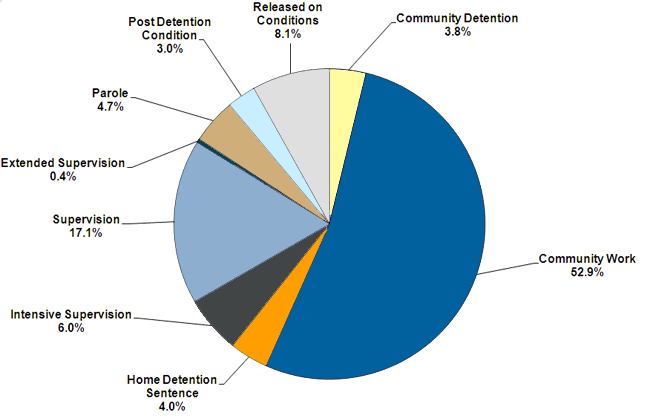
* Refers to the total number of sentences and orders being served. An individual offender can be serving more than one sentence and/or order at any time.
Percentage of offenders serving community sentences and orders in different age groups
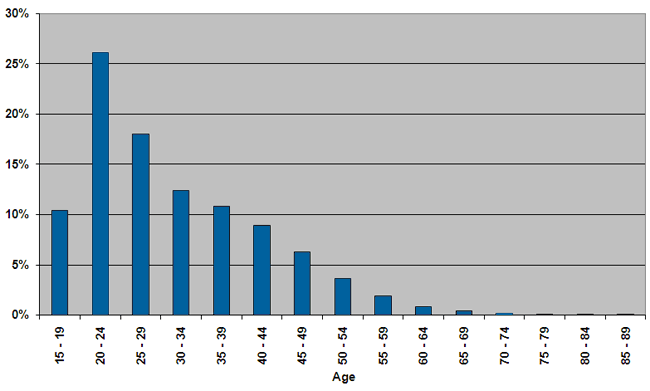
* This graph relates to the number of individual offenders serving sentences or orders in the community. An offender can be serving more than one sentence and/or order at any time.
Percentage of offenders serving community sentences and orders according to most serious* offence type
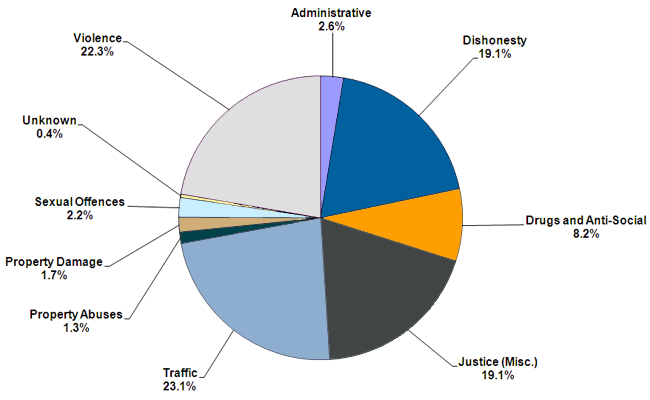
* Offenders may be convicted of offences across multiple categories. This information is based on the most serious offence a prisoner is convicted of.
Gender of offenders serving community sentences and orders
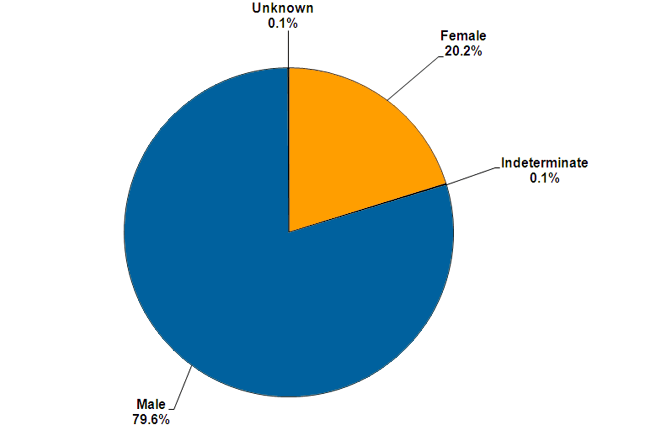
* This graph relates to the number of individual offenders serving sentences or orders in the community. An offender can be serving more than one sentence and/or order at any time.
Ethnicity of offenders serving community sentences and orders
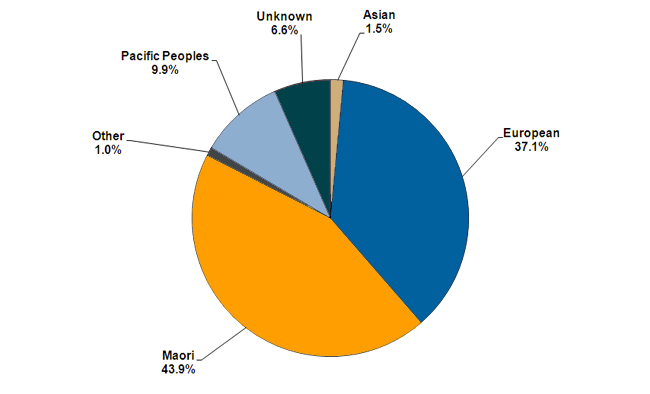
* This graph relates to the number of individual offenders serving sentences or orders in the community. An offender can be serving more than one sentence and/or order at any time.
Other facts and figures
- The average number of offenders on community sentences and orders being managed on any given day was 44,893 at the end of March 2010.
- Offenders serving Community Work sentences completed 3,754,618 hours of work in the 2009/10 financial year.
- Corrections provided 59,334 reports to the courts in the 2009/10 financial year.
- 46 per cent of those who serve a community-based sentence or order are not convicted of another crime within four years.
- 36 per cent are convicted of a crime and receive another community sentence within four years.
- 18 per cent are convicted of a crime and sent to prison within four years.
* The reconviction rates above are from a 2008 report: Reconviction patterns of offenders managed in the community

